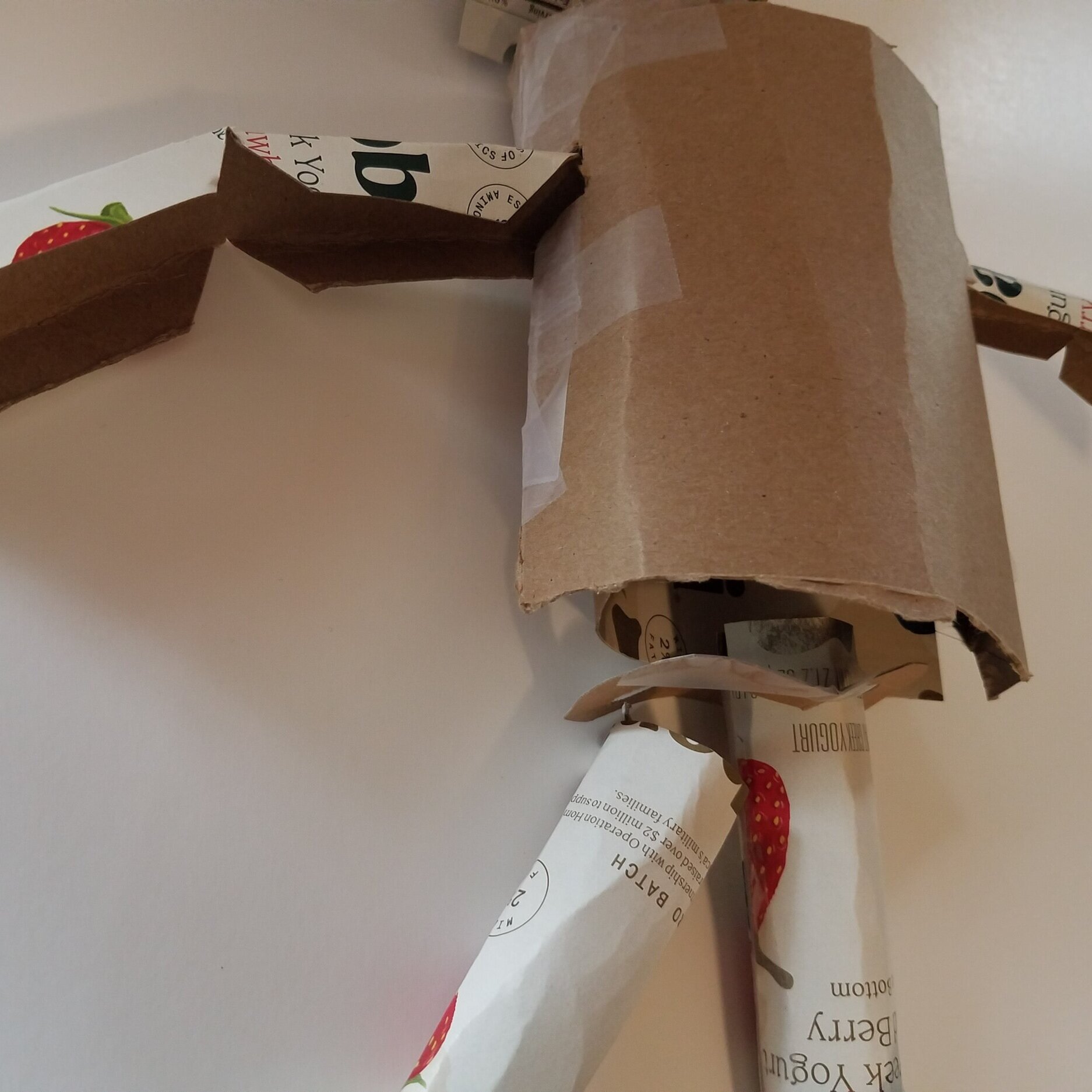Teaching in New Media
Exploring the PnP and the Microbit
I had no idea what a Microbit or a PnP board was prior to this class. I was overwhelmed when I received it in the mail, although I thought it was VERY COOL. When I found out this week that I had a special kit, I decided I wanted to explore what it could do. I went to the OSOYOO site’s tutorials and decided to see if I could find anything cool to incorporate into my final project.
Lesson 11
SOUND ACTIVATED LIGHT I was thinking it would be fun if my final project had a musical component. I selected this tutorial to see how it would work. The sound sensor was too sensitive. I wanted the light to flash when I clapped, but it turned on and off to slow.
LESSON 5
MINI TRAFFIC LIGHTS I still was thinking about adding lights to my project, so I did another tutorial where lights would flash. It worked but I realized that these light would be too heavy to support with the bristol board I had for my construction.
Servo Motors
I knew I wanted to use at least two servo motors, so I searched for code to make them work with the PnP. What I found didn’t work. My micorbit was also erratic. It would work, then I would go do something else and when I came back it didn’t work. I troubleshooted. I found that when I clicked on the lock to the left of the url, I could unpair my microbit. Doing that would sometimes work.
After scouring the internet, I couldn’t find code for the servo. The code I originally found didn’t work. I also didn’t know if I had connected the servo to the right part of the PnP board until I found a photo that showed it hooked up to where I had plugged in the lights. That’s when I also found some servo code in Arduine. I was getting too tired to figure that out. That’s when I emailed you.
By the way, I didn’t make the unicorn, monster or inchworm. If that will effect my grade, let me know and I’ll make one. Part of me, was afraid to splice the servos and alligator clips and end up not having what I would need to work with later on. I didn’t know enough about the microbit to know that I would have been OK.
The Robot
It may not have looked like it, but I did a lot of thinkering when planning out my robot. After a few paper sketches, I created some rough structures to see how I might construct my dancing machine. I wanted my robot to stand on a base which rotated 180° in a half circle. I wanted the arms to move, one arm would be at ~90° and the other arm at ~60° and then they would switch the other way like a seesaw. I would need the servo to turn ~30° back and forth. Because they was going to be a servo inside the body. I wanted the legs to be sturdy. I made them like columns and would place them close together, but not touching.
Back to the servo motors
When you helped me find the code for the servos, I plugged it in and it worked. However, the servos were doing full circles instead of half circles. I couldn’t figure out how to change the code (or my microbit was acting up). I decided to rethink my robot to rotate a full circle and create a gear system to move the arms. It sounded like a good idea at the time, but it was really late.
Robot body and modifications
I had already started making the legs. Since the legs are NOW going to rotate 360°, I hod to change the torso to accommodate that. I still wanted a servo motor in the torso. Below is a rough schematic of how I would attempt all this and some quick prototypes of the construction. I also realize I would need a complex gear system to make both arms work. I got rid of one arm.
Gravity
It was too top heavy and not balanced. I would have need a counterweight on the left side. I also realized that in order to make the whole thing stable I would have needed to precisely cut measured pieces, a thick dowel rod, better tape and more hot glue. I would also need to make the robot out of cardboard or chipboard, not bristol board.
the robot dance Final phase
So after those modifications, it worked but it was falling apart. I gave my robot a disco vibe but from an engineering standpoint, it didn’t quite work. Below is the code, the robot and the dance.
I went back after class and fiddled some more. I made it a bit more stable I also have it rotating only 180°. To make it awesome, I would have needed a lot more time. Either way, it was an exhausting 4 days of computational thinking (amongst other brain functions).
The Robot Dance Workshop
My big event would be the culmination of a workshop that studied robotic motion using dance as a way to study biomechanics. Since the class would be for inner city middle schoolers, I figured the robot dance would pique their interest and keep them engaged. However, the robot dance is known globally and a workshop of this type could exist anywhere.
The history of the robot dance started with a combination of influences. In the late 1960s, the mime and street performer Robert Shields had an act where he acted like a robot. He wasn’t dancing, but you can see how his movements influenced others. David “Campbellock” Campbell set the movements to music and eventually gathered a group of dancers that locked, popped and robotted. Still, that wasn’t enough the catalyst that brought the dance to the mainstream. The robot dance officially became part of pop culture in 1974. We can thank the Jackson 5, and Michael Jackson, for the robot dance and it’s influence on dance ever since. The video below is a brief history of the robot dance.
The workshop would also discuss automata. The use of cams and gears are needed to make automata work. A closer look at “The Writer” by Jaquet-Droz reveals that this automata from the 1700s could be considered the first programmable computer. The boy was able to write messages on a piece of paper using a quill. The messages could be programmed with the use different cams for each letter.
The students would then examine works of current automata. We would look at some at the automata at Disney World. We would also look at much simpler automata from artist’s like Paul Spooner.
The students would sketch, thinker, use computational thinking and basically relive a less intense version of the experience I had. The students would need to also look at paper construction and engineering. The students would need to build a few structures so that the students could get a grasp of what makes a stable structure. The workshop would involve coding the microbit, some gear mechanism, and some artistic flair to give their robot a personality.
The celebration would showcase the student’s achievements. It would be a pre-requisite that each student discuss the process, the mistakes, the successes of creating their robot. Aside from that, the students could determine what the rest of the presentation/party could be. It could be a dance party with robot dance lessons or a dance party like a Soul Train episode or whatever else they can come up with.
I’m hooked on Deep Dream
Best ones so far…









